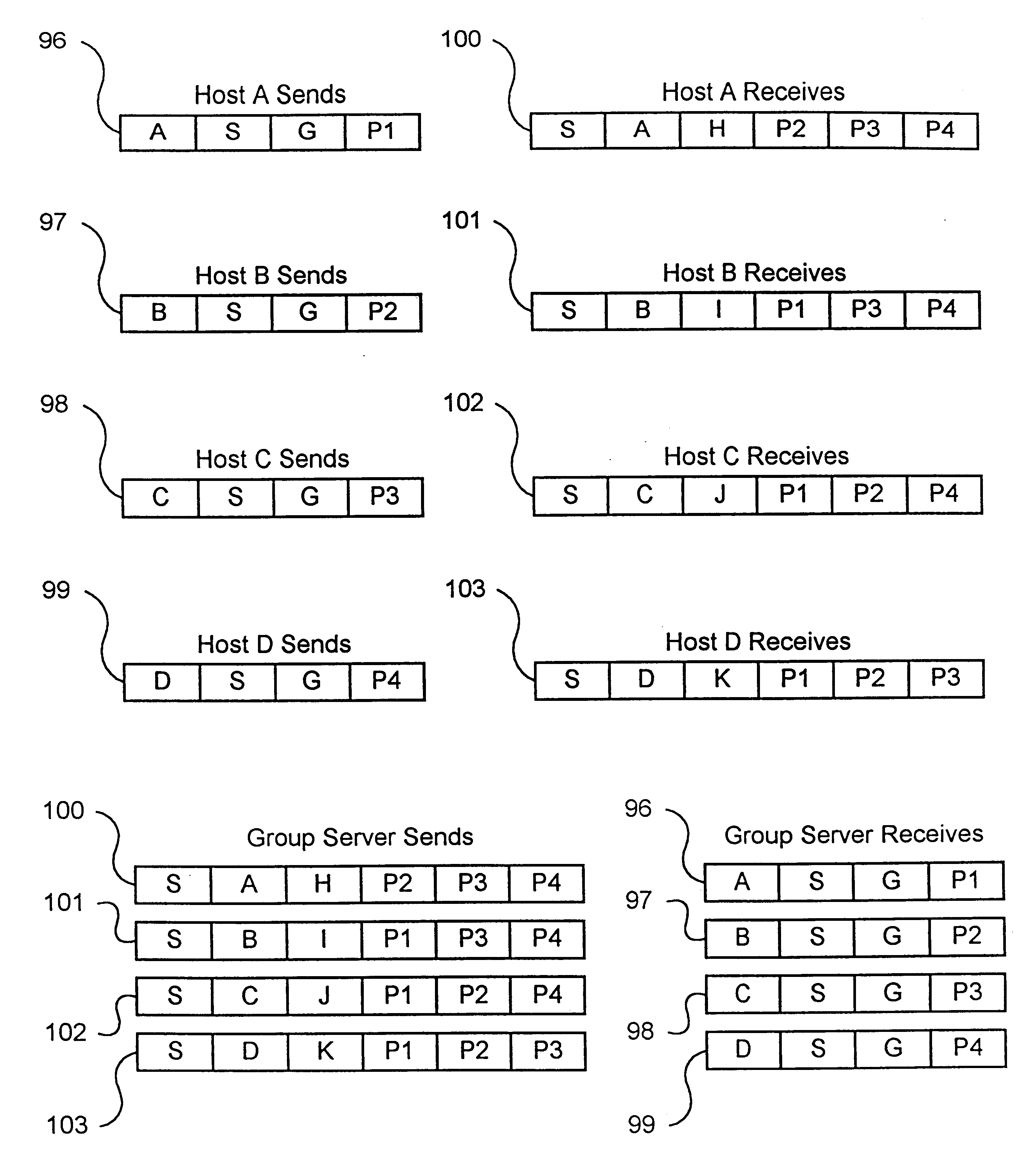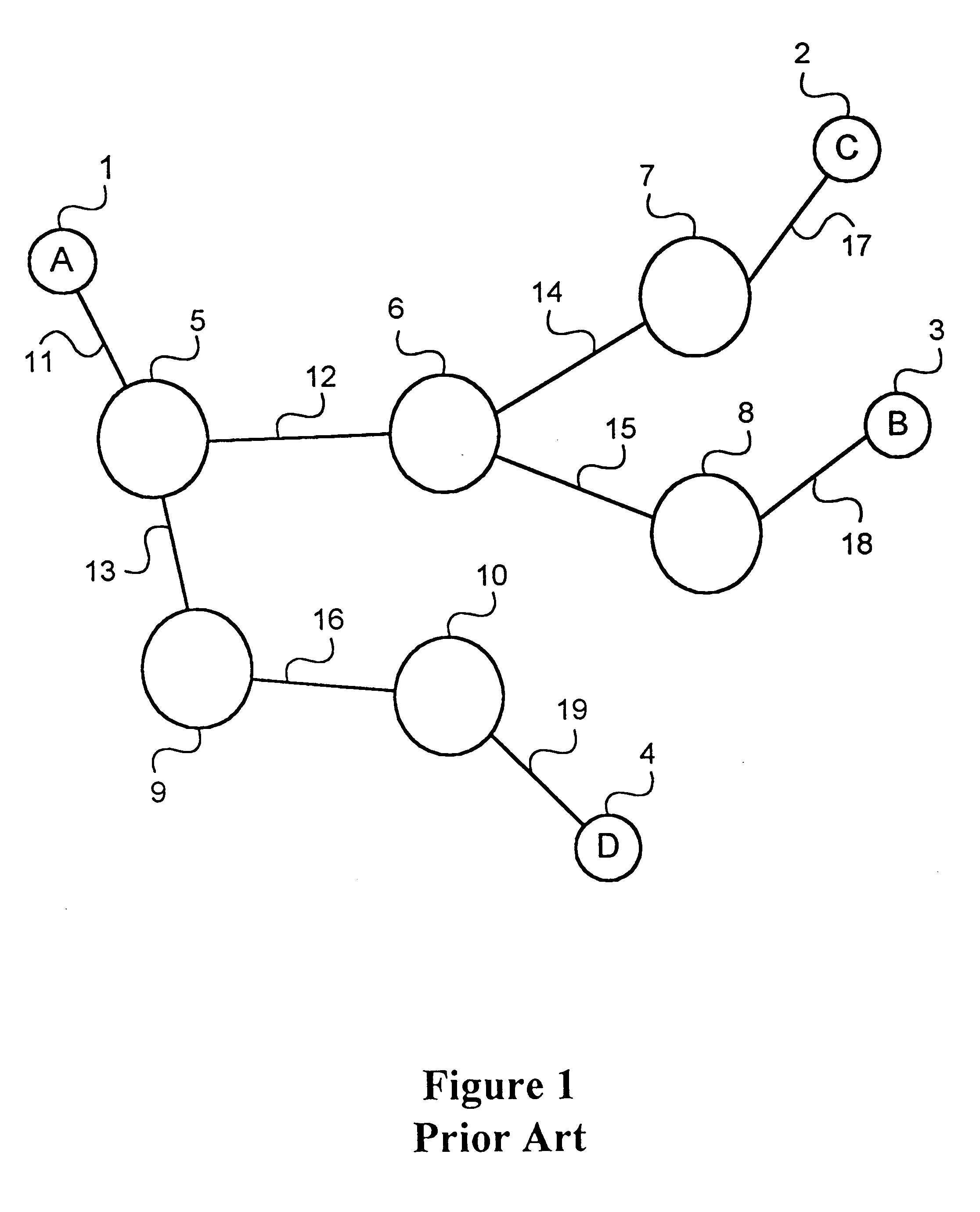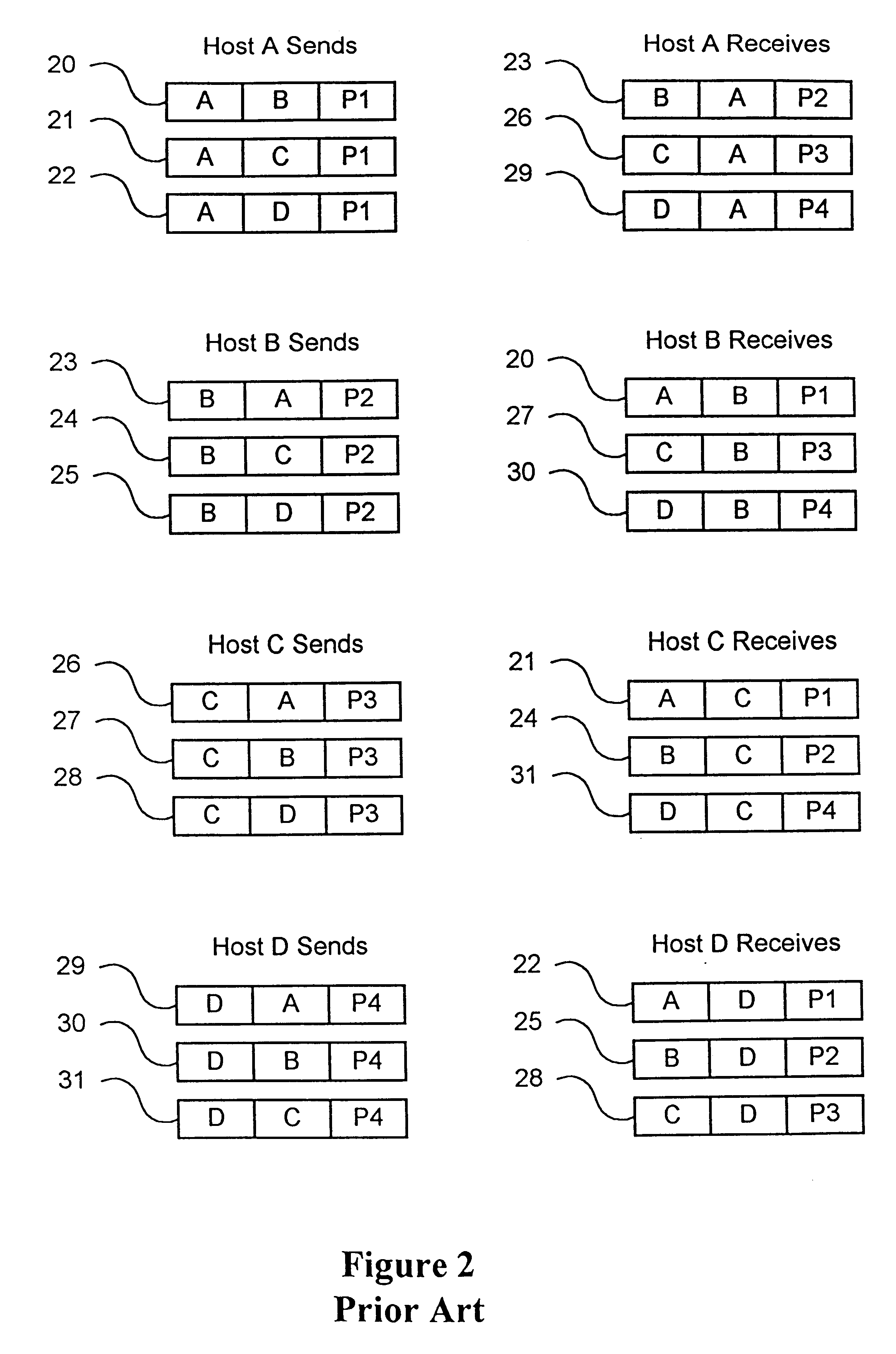, the present invention deals with the issues of deploying an interactive application for multiple participants on
wide area networks by providing a method for reducing the overall message rate and reducing latency. This invention uses a server group messaging approach, as oppose to the above described "distributed
multicast messaging" approach. The present invention overcomes the undesirable side effects of the distributed
multicast messaging approach. Further, it reduces the message rate between the hosts. As pointed out in an example discussed above, with prior art distributed multicast messaging, each host will need to send only one message to the group containing all of the hosts seven times per-second, but will still receive 9 messages, seven times per-second. The present invention of server group messaging has each host sending one message, seven times per-second and receiving one message, seven times per-second.
The interactive application can send and receive conventional network messages using the
host interface to the TLP. The interactive application also can send and receive ULP messages through the
host interface for the ULP. Internal to the
host interface for the ULP is a table, 152, of all ULP addresses which the host can send messages to. Each entry in the table contains a pair of addresses, a ULP address and its corresponding TLP address. When the host sends a message to a ULP address, that message is encapsulated in a TLP message sent to the TLP address corresponding to that ULP address. This allows the ULP messages to be handled transparently by the transport mechanisms of the existing network. A
core function of the ULP is group messaging where hosts send messages to message groups populated by multiple hosts. This allows a host to send a message to multiple hosts with one ULP message. Since the ULP is layered on top of the TLP, the group messaging functions of the ULP operate on a conventional unicast network where TLP messages can only be sent from one host to only one other host.
The effect of aggregation will be to greatly reduce the total message rate received by the hosts. A single message to a host will be able to carry multiple
payload items received from the other hosts during the aggregation period. This fits very well the interactive applications of this invention where groups of hosts will be sending messages to all the other hosts in the group at a periodic rate. Aggregation will be very effective in collecting together all of the messages from all of the other hosts into a single message for each member of the group. The reduces
processing at each receiving host since a single message will be received rather than many separate messages. Aggregation will also reduce the total
data rate to the hosts since aggregation eliminates the need for separate message headers for each
payload item. The savings will be significant for small
payload items since there will be only one message header comprising fields 123, 124 and 125 for multiple payload items. In cases where a group of hosts are sending messages to the group at a periodic rate, it is often the case in many interactive applications that the data being sent by each host to the group is very similar to the messages sent by the other hosts. This affords the opportunity within an aggregated payload of multiple payload items to apply a
data compression method across the multiple data elements of the payload elements. A wide variety of known
data compression methods will lend themselves to this application. The first
data element in the first payload item can be sent in uncompressed form with each subsequent
data element being compressed using some form of difference coding method. A variety of known
data compression methods use the concept of a predictor with differences from the predicted value being encoded. The first
data element in an aggregated payload can be used as this predictor with the subsequent data elements coded using such a data
compression method. These conventional data compression methods do not assume any knowledge of the internal structure or function of portions of a data element to compress. It is also possible to make use of
application specific coding techniques that take
advantage of such knowledge to potentially achieve much higher coding efficiency.
Another embodiment of the SI method is to allow the ULP server process to dynamically vary the time period based on some criteria such as the received message rates, and / or received
data rate. The ULP server could use a function to define the aggregation period based on the number of messages received per second or the total number of payload bytes received per second. One reasonable function would be to shorten the aggregation period as the rate or received messages or
data rate of the received payloads increased. This would tend to keep the size of the outbound messages from growing too much as received messages and / or received data rate grew. Other possible functions could be used that varied the aggregation period based on received message rates, received payload data rates or other parameters available to the ULP server process.
This aggregation technique has the additional benefit of causing the hosts which are member of an HS implicit message group to have their
processing functions synchronized when they are executing the same interactive application. Many networked interactive applications are based on a simple overall three step operational model: wait for messages from other hosts, process the messages and the local users inputs to update the local application, send messages to the other hosts. This basic application loop is repeated at a rate fast enough to provide an interactive experience such as 5 to 30 times per second. It is desirable to keep such applications synchronized so that the states of the applications is consistent on the different host machines. When such applications communicate using the HS model of the present invention their operations will become naturally synchronized. The HS ULP server process will wait until all of the members of the message group has completed their turns and sent a message to the group before sending the aggregated messages to the members of the group. This will cause the applications on the hosts to wait until they have received the aggregated messages. They will all then start
processing these messages along with the local user inputs. Even if they perform their processing at different speeds and send their next messages to the group at different times, the HS ULP server will wait until all have completed their processing and reported in with a message to the group. This will keep all of the host applications synchronized in that every host will be at the same application loop iteration as all of the others. This will keep the application state consistent on all of the hosts. Only network propagation delays from the GMS to the hosts and different processing speeds of the hosts will cause the start and completion of their processing to begin at different times. It is not a requirement in networked applications to keep all of the hosts precisely synchronized, only that that application state is consistent. The HS method provides a natural way to do this in the context of the present invention.
 Login to View More
Login to View More  Login to View More
Login to View More 


